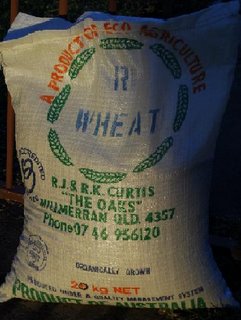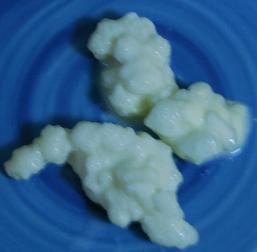BMI - is it phat?
Your BMI is supposed to help you determine if you're overweight or underweight or a healthy weight. It's a better measure than just your body weight as it takes into account your height as well. You can determine it like this:
Take your weight (eg. 64 kilograms)
Divide it by your height squared (eg. 1.74 metres * 1.74 = 3.0276)
In this case my BMI is 21.14, which is within what is considered the normal range of 19 to 25. A BMI higher than 25 indicates you are overweight (use 27 as the cut-off if you're very muscular), and a BMI higher than 30 indicates you are obese.
A limitation of the BMI is that it doesn't really take into account muscle versus body fat. It serves only as a rough indicator of whether you would be considered a healthy weight for your height, acting only as a jazzed up simplified way to determine this without having to pull out the healthy weight to height charts. It doesn't even take into account whether you are a small, medium or large frame build - as the healthy weight to height charts do.
A better way to think is in terms of body composition. See, you could have the same BMI as someone else but while they have mostly muscle you could have mostly fat on your skeleton. And your weight might lead you to think you're losing fat, whereas really you might be dehydrated or be losing muscle mass (which is heavier than fat). By measuring your body composition you can see far more clearly where you are at and if you are making progress with your overall exercise/health/life.
Take your weight (eg. 64 kilograms)
Divide it by your height squared (eg. 1.74 metres * 1.74 = 3.0276)
In this case my BMI is 21.14, which is within what is considered the normal range of 19 to 25. A BMI higher than 25 indicates you are overweight (use 27 as the cut-off if you're very muscular), and a BMI higher than 30 indicates you are obese.
A limitation of the BMI is that it doesn't really take into account muscle versus body fat. It serves only as a rough indicator of whether you would be considered a healthy weight for your height, acting only as a jazzed up simplified way to determine this without having to pull out the healthy weight to height charts. It doesn't even take into account whether you are a small, medium or large frame build - as the healthy weight to height charts do.
A better way to think is in terms of body composition. See, you could have the same BMI as someone else but while they have mostly muscle you could have mostly fat on your skeleton. And your weight might lead you to think you're losing fat, whereas really you might be dehydrated or be losing muscle mass (which is heavier than fat). By measuring your body composition you can see far more clearly where you are at and if you are making progress with your overall exercise/health/life.
So how much body fat is healthy? Here are a few suggested healthy ranges for body fat:
Women: 18 - 28%, 'ideal' at 24%, 'toned/firm' at 18 - 20%
Men: ~15%
From: Aston D. Fat or Fiction: Are you living a fairy tale?. 2002; 2:14-19 (renowned Australian bodybuilder Donna Aston)
Women: 18 - 28%, 'ideal' at 24%, 'toned/firm' at 18 - 20%
Men: ~15%
From: Aston D. Fat or Fiction: Are you living a fairy tale?. 2002; 2:14-19 (renowned Australian bodybuilder Donna Aston)
| Healthy body fat ranges(%) | ||||||||
| Age | Female | Male | ||||||
| 20-39 | 22-32 | 9-20 | ||||||
| 40-59 | 24-34 | 12-22 | ||||||
| 60-79 | 26-37 | 14-24 | ||||||
From: Gallagher et al. Am J Clin Nutr. 2000; 72:694–701
So in taking the outer limit values from these two sources, somewhere between 18-32% is a generally healthy range for females 20-39, and 9-20% is a healthy range for males the same age.
In her book, Donna Aston says for a female to look toned and firm, they would have to achieve between 18 to 20% body fat, so the lower ranges are more what most people are aiming at, with only elite female athletes generally being below 15% body fat (male athletes getting down to 4%) and Donna herself competing in a bodyshaping competition weighed 55kg with 8% body fat.
Now that we know what we're aiming at, how can we measure it? Body fat scales or body composition scales are the only realistic answer to this (unless you want to do underwater weighing in a lab every day, hmm). Chuck out the old 'weight' bathroom scales and invest in a decent set of scales that will actually tell you useful information and allow you to measure progress.
Body Composition or body fat scales work by using BIA - bioelectrical impedance analysis, which sends out an electric impulse and measures the resistance of body tissues- flowing freely through muscle/water containing tissue and meeting resistance at fat. The impedance data is put into an equation along with your total body weight and entered age/height/gender etc details, and is then usually spat out as a percentage of your total body weight.
When choosing a scale the TANITA InnerScan Body Composition Monitor BC-532 is the Creme de la Creme at $399 with all the functions you could possibly desire and being very accurate, and the PROPERT Glass Body Fat Electronic Bathroom Scale 3040 at $79 is the economic choice but almost as good in terms of accuracy as the top and mid-priced scales but without the extra features (much better than the old weight-only scales).
So in taking the outer limit values from these two sources, somewhere between 18-32% is a generally healthy range for females 20-39, and 9-20% is a healthy range for males the same age.
In her book, Donna Aston says for a female to look toned and firm, they would have to achieve between 18 to 20% body fat, so the lower ranges are more what most people are aiming at, with only elite female athletes generally being below 15% body fat (male athletes getting down to 4%) and Donna herself competing in a bodyshaping competition weighed 55kg with 8% body fat.
Now that we know what we're aiming at, how can we measure it? Body fat scales or body composition scales are the only realistic answer to this (unless you want to do underwater weighing in a lab every day, hmm). Chuck out the old 'weight' bathroom scales and invest in a decent set of scales that will actually tell you useful information and allow you to measure progress.
Body Composition or body fat scales work by using BIA - bioelectrical impedance analysis, which sends out an electric impulse and measures the resistance of body tissues- flowing freely through muscle/water containing tissue and meeting resistance at fat. The impedance data is put into an equation along with your total body weight and entered age/height/gender etc details, and is then usually spat out as a percentage of your total body weight.
When choosing a scale the TANITA InnerScan Body Composition Monitor BC-532 is the Creme de la Creme at $399 with all the functions you could possibly desire and being very accurate, and the PROPERT Glass Body Fat Electronic Bathroom Scale 3040 at $79 is the economic choice but almost as good in terms of accuracy as the top and mid-priced scales but without the extra features (much better than the old weight-only scales).


